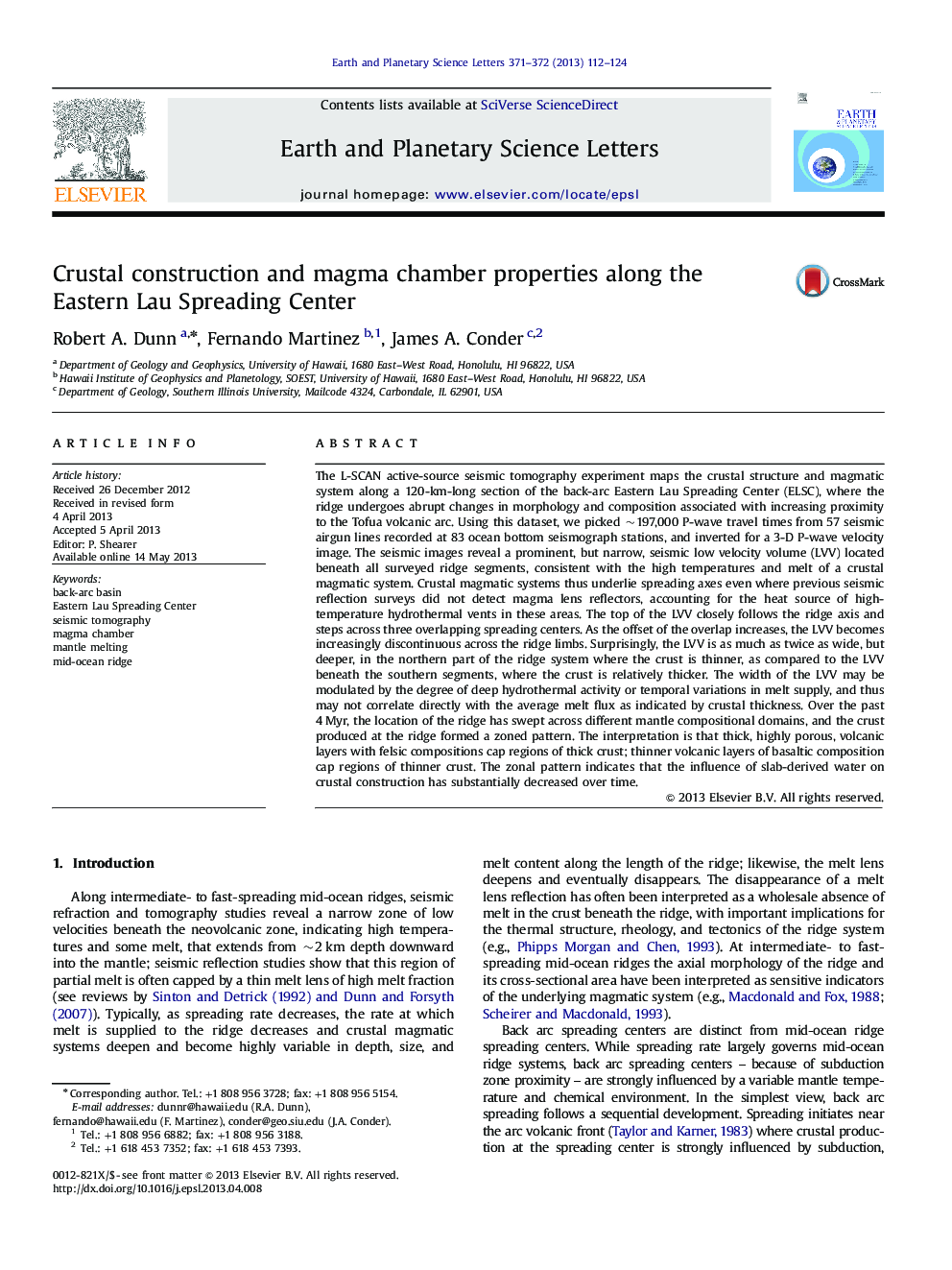| کد مقاله | کد نشریه | سال انتشار | مقاله انگلیسی | نسخه تمام متن |
|---|---|---|---|---|
| 4677216 | 1634783 | 2013 | 13 صفحه PDF | دانلود رایگان |
• Slab‐derived water is not distributed uniformly in the mantle wedge.
• Where/when close to the arc, the ELSC tapped a region with a large amount of water.
• A crustal magmatic system exists beneath all segments of the ELSC in the study area.
• The width and melt content of the crustal magmatic system is highly variable.
• The magmatic system is offset across larger overlapping spreading centers.
The L-SCAN active-source seismic tomography experiment maps the crustal structure and magmatic system along a 120-km-long section of the back-arc Eastern Lau Spreading Center (ELSC), where the ridge undergoes abrupt changes in morphology and composition associated with increasing proximity to the Tofua volcanic arc. Using this dataset, we picked ~197,000 P-wave travel times from 57 seismic airgun lines recorded at 83 ocean bottom seismograph stations, and inverted for a 3-D P-wave velocity image. The seismic images reveal a prominent, but narrow, seismic low velocity volume (LVV) located beneath all surveyed ridge segments, consistent with the high temperatures and melt of a crustal magmatic system. Crustal magmatic systems thus underlie spreading axes even where previous seismic reflection surveys did not detect magma lens reflectors, accounting for the heat source of high-temperature hydrothermal vents in these areas. The top of the LVV closely follows the ridge axis and steps across three overlapping spreading centers. As the offset of the overlap increases, the LVV becomes increasingly discontinuous across the ridge limbs. Surprisingly, the LVV is as much as twice as wide, but deeper, in the northern part of the ridge system where the crust is thinner, as compared to the LVV beneath the southern segments, where the crust is relatively thicker. The width of the LVV may be modulated by the degree of deep hydrothermal activity or temporal variations in melt supply, and thus may not correlate directly with the average melt flux as indicated by crustal thickness. Over the past 4 Myr, the location of the ridge has swept across different mantle compositional domains, and the crust produced at the ridge formed a zoned pattern. The interpretation is that thick, highly porous, volcanic layers with felsic compositions cap regions of thick crust; thinner volcanic layers of basaltic composition cap regions of thinner crust. The zonal pattern indicates that the influence of slab-derived water on crustal construction has substantially decreased over time.
Journal: Earth and Planetary Science Letters - Volumes 371–372, June 2013, Pages 112–124
